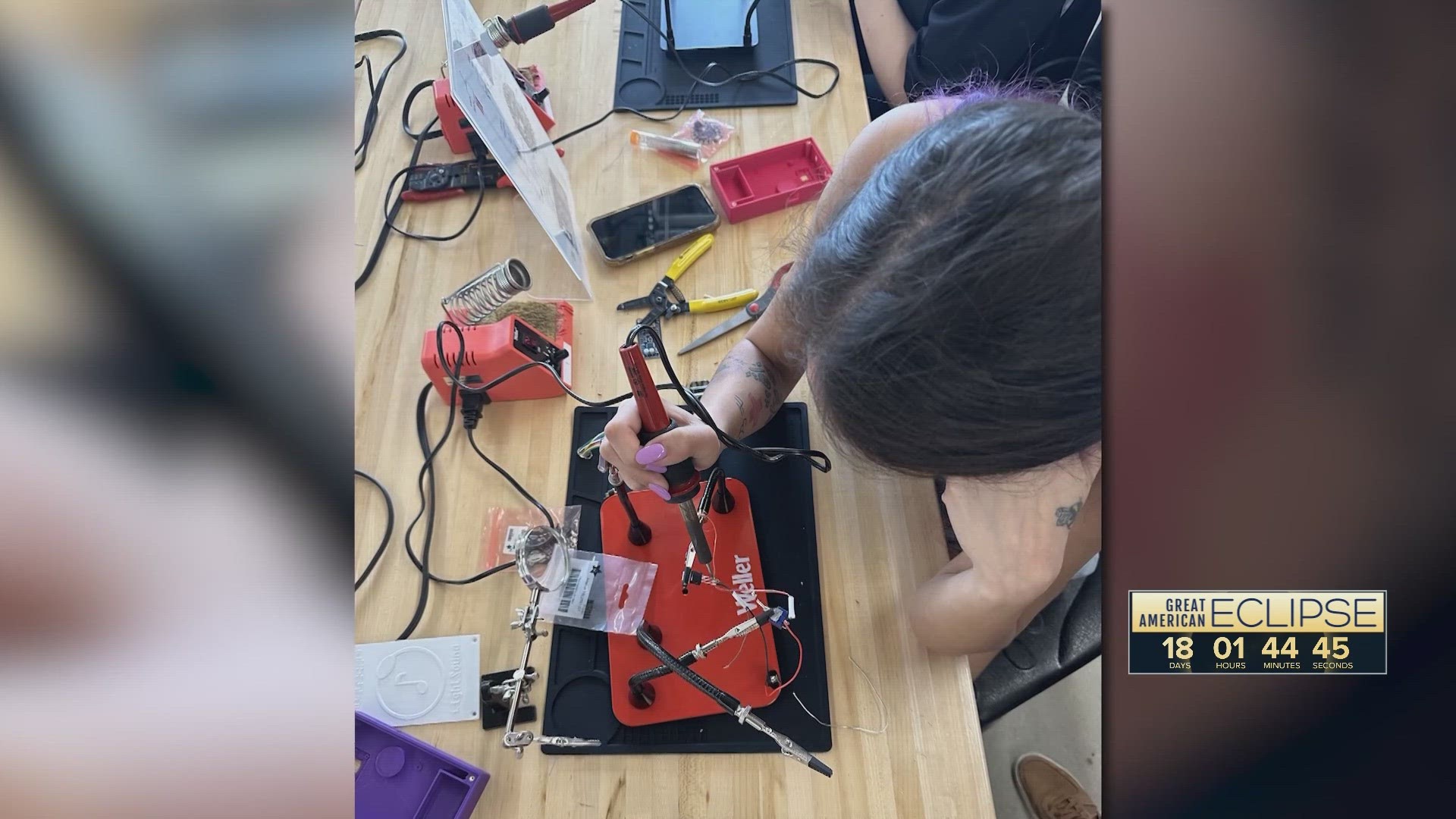SAN ANTONIO — A device the size of a phone can help people who are blind or have low vision experience the Great American Eclipse when it graces the sky on April 8. The University of Texas at San Antonio is helping people experience the historic phenomenon as part of a nationwide project.
UTSA Eclipse Project Manager Lindsay Fuller is with the UTSA Department of Physics and Astronomy.
"A total solar eclipse is something that is really visual," said Lindsay Fuller, UTSA eclipse project manager and a lecturer in the physics and astronomy department. "So, for someone who can't see, they are able to experience an eclipse in a way that is a little bit different."
An astronomer at Harvard University, Allyson Bieryla, helped develop The LightSound Project.
"She came up with the concept of the boxes so people who are blind or low vision can experience eclipses," Fuller said.
UTSA researchers, staff and students got to help with the project. According to Fuller, they helped make about 30 of the devices that visually impaired eclipse enthusiasts will utilize.
Inside the device is a circuit board.
"I think it took three hours to make my box," Fuller said.
There is a place to connect headphones or a speaker that the sound will be emitted from. Fuller explains how it will all work by turning the power of the sun into an audible effect.
"As the moon begins to move in front of the sun, the intensity of the light from the sun decreases and the tone from the output of the box gets deeper," she said.
Fuller said people using the device will then heard a different sound when the window of totality passes and normal daylight returns.
"The importance of this project is having everybody be able to experience the eclipse in some way," she said.
As for the devices, she said they distributed them to organizations around San Antonio. UTSA's main campus will be on the inner edge of the path of totality come April 8.
>TRENDING ON KENS 5 YOUTUBE:

